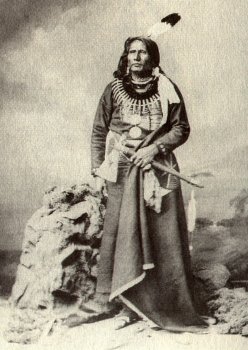Smidgens of Justice for the Tribes

Good news for those of us who follow the history of major Euro-American institutions looting objects from tribal peoples around the world. And more importantly, good news for the Ponca.
A tomahawk once owned by Chief Standing Bear, a pioneering Native American civil rights leader, is returning to his Nebraska tribe after decades in a museum at Harvard.
The university’s Peabody Museum of Archaeology & Ethnology says it’s been working with members of the Ponca Tribe in Nebraska and Oklahoma to repatriate the artifact.
Larry Wright, Jr., chairman of the Ponca Tribe of Nebraska, said Tuesday the return of the historic weapon is a powerful symbol of homecoming for the tribe, which was among many forcibly relocated from their homelands to other territories by the federal government in the 1800s.
“That’s a piece of our history that represents who we are and why we’re here in Nebraska, so for it to be back home is very appropriate,” he said. “It tells that history and lets us never forgot what our people went through.”
Standing Bear was arrested 1878 for leaving the tribe’s Oklahoma reservation in order to fulfill a promise he made to bury his eldest son back in their tribe’s homeland in Nebraska’s Niobrara River Valley. In his landmark federal trial, he successfully argued for the recognition of Native Americans as persons entitled to rights and protection under law.
“That hand is not the color of yours. But if you pierce it, I shall feel pain,” Standing Bear famously said in court. “The blood that will flow from mine will be the same color as yours. I am a man. The same God made us both.”
There’s no firm timeline for the tomahawk’s homecoming, but Wright and other Ponca tribe leaders are slated to travel to Harvard in September, according to Jane Pickering, the museum’s director.
The tribe delegation will view the tomahawk as well as other items related to Standing Bear, including a beaded necklace, quilled moccasins and a pipe bowl, she said.
Every institution who holds this kind of material needs to work with the tribes, return what they want returned and get agreements to display what the tribes want to have displayed, with the tribes deciding how it is presented. It’s the only anti-racist, anti-colonialist option these institutions have.


